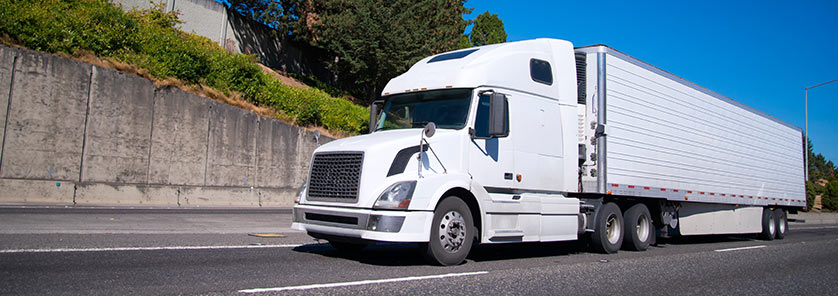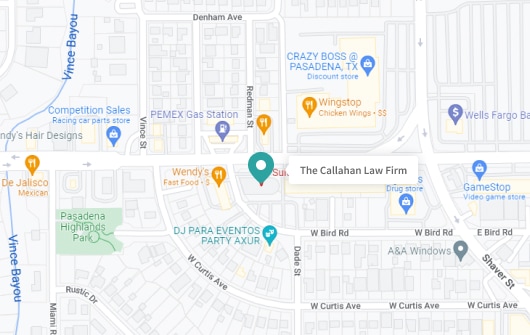Truck inspections save lives – it’s that simple. Every time a truck hauls cargo, the truck and its trailer are required to undergo a thorough inspection before and after the trip. Truck inspections can catch dangerous problems and prevent mechanical failures that cause accidents. When a truck driver or trucking company fails to conduct an inspection or fails to address maintenance issues found during the inspection, a devastating accident can result.
If you have been injured in a truck accident, contact an experienced truck accident attorney who understands the laws and regulations addressing truck inspections. At The Callahan Law Firm, we have more than 25 years of experience helping those who have been injured in truck accidents. Whether it is investigating an accident, reviewing inspection records or analyzing the laws surrounding your injury claim, we are here to help.
Call us or contact us online today for a free claim review and consultation about your options for seeking compensation.
Truck Inspection Requirements
Truck drivers are required to inspect their trucks prior to and immediately following their trip:
Pre-trip inspections – An inspection before getting on the road is one of the most important safety activities that truck drivers are required to do. The Federal Motor Carrier Safety Regulations and applicable state law require these inspections.
Before each trip, the driver should carefully inspect:
- The engine compartment (including fluids and oil levels, belt conditions, and electrical component insulation)
- Internal gauges and other monitoring systems
- Any control equipment such as truck and trailer brakes, gas pedals, clutch, and steering
- Headlights, horn, and other communication equipment
- Mirrors, reflectors, and signaling lights
- Emergency and safety equipment, including fire extinguishers and reflective triangles
- Tire wear and pressure, including spare tires
- Coupling systems, including safety chains
- Cargo to ensure it is properly balanced, secured, and marked with appropriate signage
- Overall condition of the vehicle, including a test of the hydraulic systems prior to departure
The pre-trip inspection is a crucial part of truck safety for the truck driver and other motorists. The truck driver must record any damage or problems and properly address them before the truck gets on the road.
Inner-trip inspections – During a trip, a driver must be aware of the surroundings and the condition of the truck. Drivers must monitor any instruments and pressure gauges in the vehicle. Drivers must also regularly check their mirrors and keep an eye on their tires, lights, and other equipment.
Under FMCSR section 392, truck drivers must check their cargo’s condition during a trip and ensure it is secure. Applicable federal and state law requires that truck drivers inspect their cargo within the first 50 miles of a trip and make any necessary safety adjustments. They must then check that the cargo is secured any time a change occurs in their duty status or when they have driven three hours or 150 miles (whichever comes first).
Post-trip inspections – Drivers must also perform a post-trip inspection and report their findings in a Driver’s Vehicle Inspection Report (DVIR). Common maintenance and inspections that must be completed after a trip include:
- Checking air tanks and fuel tanks and refilling them as necessary
- Inspecting the vehicle for any problems, wear, equipment damage, or developing problems
- Completing a DVIR and logging any findings, problems, or potential issues with the vehicle
Post-trip inspections and reports are required by applicable federal and state law and are an important part of keeping a truck safe and secure on the road.
External Inspections
External inspections help the driver catch any problems with key truck systems, including:
- Tires for characteristics such as inflation, condition, and tread depth
- Headlights, turn signals, and reflectors
- Fluid leaks from key systems
- Suspension including shock absorbers, spring hangers, bolts, and frame members
- Exhaust systems for broken, missing, or incorrectly positioned parts
- Coupling system for missing or worn chains, pins and other problems
Internal Inspections
Internal inspections ensure that systems are working properly and that the truck will be safe on the road. Internal inspections may involve:
- Instrumentation and monitoring systems, including sensor systems
- Communication devices, including horns and lights
- Checking safety belts
- Mirror checks
- Windshield condition including sufficient washing fluid
- Fire extinguishers
- Emergency equipment, including reflective triangles
A careful inspection done consistently ensures that the truck is in proper working condition so that it can be safely operated every time it is on the road.
Cargo Inspections
Cargo should be immobile while traveling and should be supported in any way needed to keep it in place during the trip. Cargo inspections should examine:
- Balance, blocking, and bracing of the materials
- Tie-down, nets, slings, and other cargo securing devices should be checked for placement and condition
- Chocks, wedges, cradles, and any other devices to secure cargo that may roll
- Cargo weight
- Any unique restraints needed for special cargo such as logs, rolls of material such as paper or metal, autos, heavy equipment, and irregular containers
If the driver finds any problems with the cargo or how it is secured, these problems must be addressed before the truck ever gets on the road.
Problems That Should Be Identified During Inspections
During an inspection, the driver should be on the lookout for problems such as:
- The trouble with any internal systems such as lights, safety equipment, or instrumentation
- Tire wear and damage such as cracks or bulges
- Fluid leaks such as oil or coolant
- Brake damage such as worn, hardened, or crimped lines
- Air brake system leaks
- Steering control system problems such as belts that are frayed or cracked
- Suspension system problems such as broken or missing spring leaves, cracked arms and U-bolts, and damaged or missing torque arms
- Exhaust problems such as a missing part or a part that is too close to any fuel system
- Coupling issues such as missing or broken safety chains, kingpins, U-bolts, and pivot bracket pins
- Cargo balance and devices that secure it including nets, tie-downs, braces, and other supports
Talk to an Experienced Houston Truck Accident Lawyer Now
Truck drivers are required to properly inspect their vehicles in accordance with applicable federal and state law. If you have been injured in a truck accident, make sure you have a knowledgeable truck accident lawyer in your corner.
Contact The Callahan Law Firm today. In every case, we use our vast experience and extensive resources to help those injured in truck accidents. We have what it takes to handle any truck accident case, from the initial investigation through successful resolution. Call or contact us online today.



